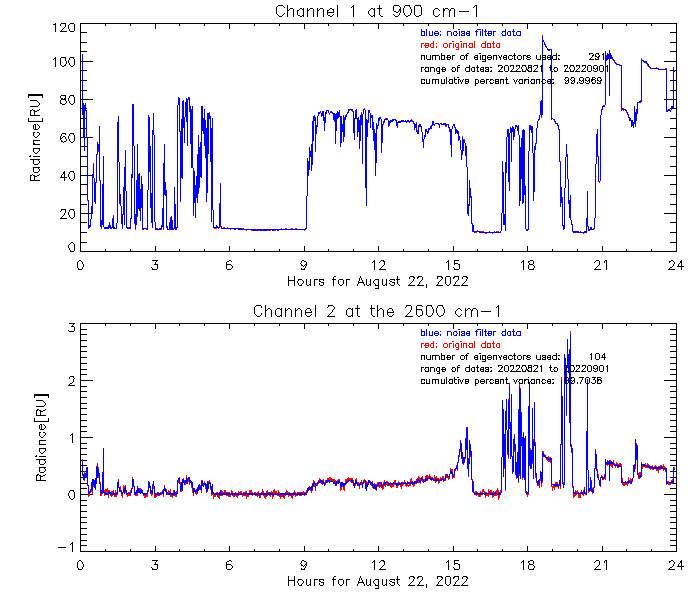AERINF
AERI Noise Filtered
Baseline VAP, Evaluation VAP, External VAP, Guest

The ARM atmospheric emitted radiance interferometer (AERI) collects a sky spectrum every 20 seconds, but the high temporal resolution results in a large random noise in the sky spectra. The AERINF value-added product (VAP) uses the high correlation in the observed radiance across the spectrum to reduce the uncorrelated random error in the data using principal component analysis. AERINF automatically determines the appropriate number of principal components to use in the reconstruction to eliminate as much random noise as possible.
A significant reduction in the uncorrelated random error in the data has been proven for both regular temporal data (pre-2008) and rapid-sample data. For more details, see A Principal Component Analysis Noise Filter Value-Added Procedure to Remove Uncorrelated Noise from Atmospheric Emitted Radiance Interferometer (AERI) Observations.
Primary Derived Measurements
Contact
View all contacts-
Damao ZhangTranslator Pacific Northwest National Laboratory
-
David TurnerScience Sponsor PI NOAA Global Systems Laboratory
Related Data Announcements
References
View all references- Turner et al. "Noise Reduction of Atmospheric Emitted Radiance Interferometer (AERI) Observations Using Principal Component Analysis". 2006. 10.1175/jtech1906.1.
Locations
Keep up with the Atmospheric Observer
Updates on ARM news, events, and opportunities delivered to your inbox
ARM User Profile
ARM welcomes users from all institutions and nations. A free ARM user account is needed to access ARM data.


















